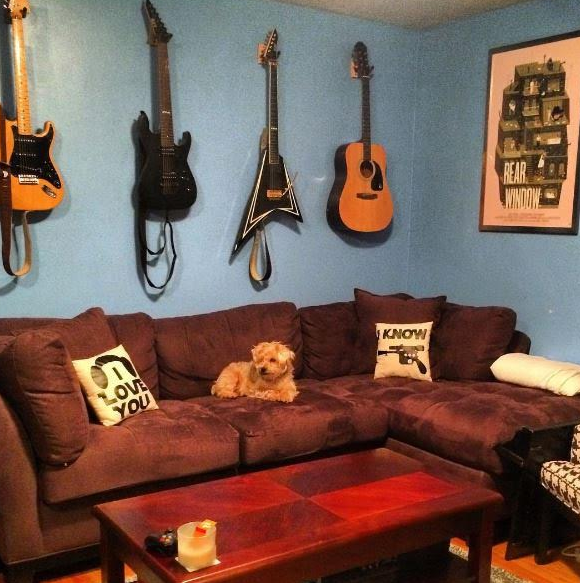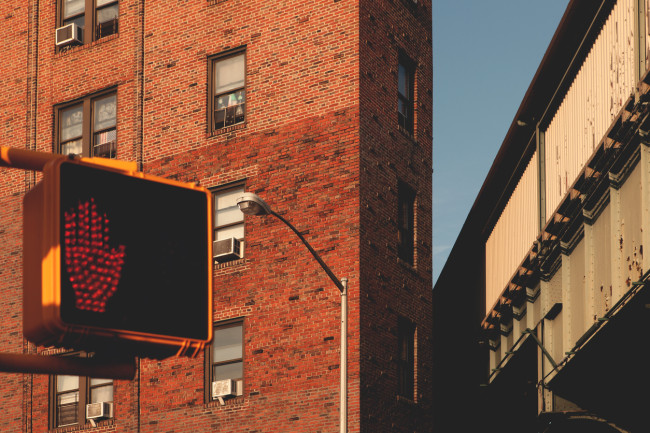A 'rental rookie' turns into a buyer: Join her journey and learn from her (mis)adventures

Photo: iStock/gerenme
Hey everyone! I’m back! And yes, I’m still surviving in New York. First, allow me to reintroduce myself. My name is Michelle. You may have read my Rental Rookie column, which ran back in 2011 and followed my struggles and triumphs as I maneuvered through the city's challenging rental market. A lot has changed since then, namely two more apartment moves and gaining another permanent roommate besides my dog, my then-boyfriend-now-husband Thor.

The two of us have lived in our “spacious” Hell’s Kitchen one-bedroom walkup for almost three years now. I love our location, from the numerous choices to eat to the friendly bodega owners. We’re a little trek from the subway, but that’s fine with us: We’re able to steer clear of tourists. And, best of all, we’ve found it much easier to convince people to go out in our area, instead of having to trek to other neighborhoods or, gasp, other boroughs.
But while it does fit a gigantic sectional, a real-sized coffee table and an oversized accent chair as well as a queen bed in the main bedroom, that’s pretty much all we could squeeze in. We don’t mind the walk up to the “European third floor” (aka fourth floor), but it is getting a little tiring. After bumping into each other one too many times, we decided it was time to move.

Moving in New York is always a Herculean task, especially when you are now carrying eight years' worth of two people's stuff. After realizing we both weren’t ready to leave the city for suburban life just yet (or at all if we could help it)—we love the being able to walk outside and have a million things to do and experience—we decided we wanted to buy our next place. We’re a few months into the process, so I’ll backtrack for a little bit to get you up to speed.
Of course, saying you want to buy a house and actually being able to buy a house are completely different things. We knew the basics: You need to have a significant amount of cash down and good credit to get a mortgage—but admittedly, we were pretty clueless after that. As we learned, the first rule of home-buying is knowing if you can buy a home. It’s not as obvious as it sounds, however.
Here’s the four main questions you should ask yourself before passing go:
Can you live there for five years?
If you’re one of those individuals with wanderlust or you’re not quite sure where your job will take you, buying a home may not be the most prudent decision. Even though your home will probably appreciate in value, don’t start seeing dollar signs just yet. The general rule of thumb is you will break even after living in a place for five years.
While breaking a lease when your renting is painful on your wallet, selling a house comes with closing costs which can be up to 10 percent of the sale price. On top of that, if you make a huge profit on your house, you may be liable for additional taxes. Thor and I are both journalists, so our jobs keep us in New York for the most part. We’ve also stayed in a place for several years—our previous apartment was also in Hell’s Kitchen—and still haven’t got sick of our neighborhood. We haven’t hit the five-year mark on an apartment yet, but we’re up for the challenge.
Do you owe anyone money?
There’s nothing wrong with having student loans or some credit card debt, especially if you’re making strides to pay it off. However, most lenders won’t consider you if you have more than a 36 percent debt-to-income ratio. Ideally, you want to be 20 percent or under. You also don’t want to owe a million different people, and have to stretch yourself too thin. You can easily cut back on going out to dinner or getting your nails done, but you can’t skimp on your required payments!
Triplemint's Off-Market Advantage
Discover off-market properties in your dream neighborhood that perfectly suit your needs and budget. Meet and deal with sellers before their apartment hits the market.


Let Triplemint's off-market team give you exclusive access to apartments in your price range and desired neighborhood that no one else has seen. More options, less competition, no bidding wars.
Can you save money?
Most important, do you have money right now?
Technically you can just put 10 percent down and buy an apartment or house—but that’s far from your only cost. Lower than 20 percent down tends to mean you’ll have to pay mortgage insurance or other fees. You’ll also have to find a place that will accept a 10 percent down in a very competitive NYC marketplace, where some places are asking for all-cash offers! Also, many co-ops—which make up the majority of housing stock in the city—demand at least a 20 percent down payment, plus reserves in the bank to pass the board interview.
On top of that, there’s closing costs—including lawyers, inspections, taxes and title transfers—you have to add. It can be up to 5 percent, and if you’re looking at places with over $1 million price tag, you’ll tack on a mansion tax on top of that. If you’re still counting your pennies to see if you have enough, don’t forget banks, co-ops and condos want to make sure you have money left in the bank after you part with your down payment. And, of course, you’ll want nice new furniture to fix up your new place. Or, perhaps you want to tear down that office wall or redo that kitchen: You’ll need cash on hand to make renovation dreams a reality.
You’ll have a few months to pull everything together from when the offer gets accepted to when you actually have to pay, but you should be pretty close to your budget before you start looking.
If you can say yes to every question, then you’re probably ready to dip your toe in the apartment hunting waters. Of course, there’s getting a broker, getting a lawyer, getting a mortgage and doing inspections, alongside looking up walk scores, crime reports, school districts—well, let's just take this process one baby step at a time. Next up, figuring what you want and where you want to be.
Michelle Castillo is on her way to becoming a New Yorker, after moving to the city from Los Angeles in 2009. She's currently a reporter at CNBC.com, and has written for other publications including The Los Angeles Times, TIME and Adweek.
You Might Also Like



























